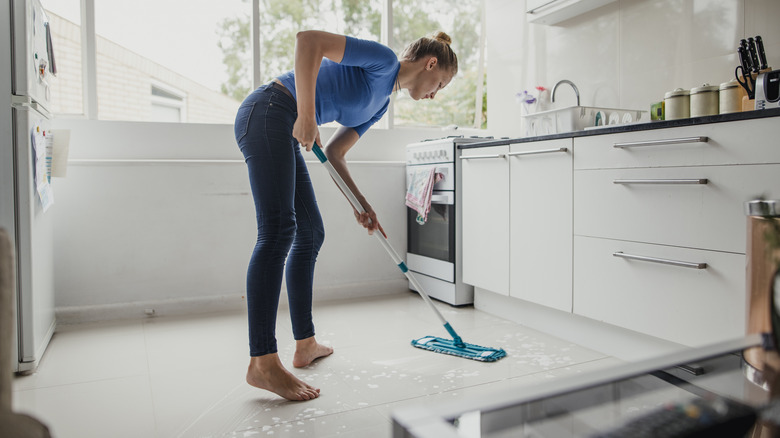You've Been Putting Swiffer Mop Pads On Wrong All Along And Had No Idea
We love alternating between using our dry and wet Swiffer mops to get the kitchen clean. The dry one picks up hair and dust, while the wet cloth or pad really gets in there and scrubs the floor, removing stuck food and sauce drippings. It also finds and retrieves the occasional lone raisin hiding in the corner. And while you can use your wet Swiffer on most hard floor surfaces, it's perfect for the kitchen.
However, have you ever pulled a wet Swiffer cloth out of the box and then plopped it on the floor or, worse, placed it on the counter next to the sink? It gets cleaning product everywhere, and then, either way, it's awkward and unwieldy to hold the mop while maneuvering the four edges of the cloth into the mop's little cloth-holding grips. You've probably been putting the Swiffer mop pad on wrong all along, making an awkward, drippy mess, and that's a mistake you don't want to make with a Swiffer.
Putting the Swiffer pad on correctly
What you want to do is open the box containing the wet pads on the floor and, leaving the cloth you'll use in the box, spread it open. Center the open cloth in the box; there should be the same amount of excess cloth hanging over the lip of the box on both sides. Place your mop on top and tuck all four corners into the grips of the mop. Alternatively, put the lid upside down on the floor and center an open cloth on it, and proceed as above, although the box method creates the least amount of dripping.
In terms of best practices, avoid using wet Swiffers on marble or porcelain. Wet Swiffers are best for typical kitchen and bathroom floors and other floor surfaces as long as they're finished, and Swiffer WetJet Wood is recommended for finished wood floors. While cleaning floors is the most obvious way to use this product, there are many other places to use a Swiffer.
